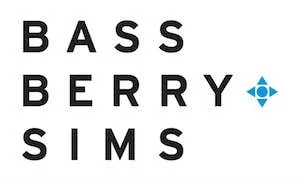- within Compliance, Environment and Coronavirus (COVID-19) topic(s)
- with readers working within the Environment & Waste Management industries
Bass, Berry & Sims attorneys Heather Pearson and David Wilson authored an article for the American Health Law Association's (AHLA) Health Law Weekly series examining the latest development in the attempt to regulate laboratory-developed test (LDTs) as medical devices. The article, "Not Medical Devices: District Court Vacates FDA's LDT Rule," was published by AHLA's Life Sciences Practice Group on April 4 and is available online (subscription required) and available in full below.
On March 31, 2025, a federal district court in Texas vacated and set aside the Food & Drug Administration's (FDA's) 2024 final rule that sought to regulate laboratory-developed tests (LDTs) as medical devices. In American Clinical Laboratory Association v. FDA, the district court held that the FDA lacked statutory authority to regulate LDTs, which are professional services performed by laboratories using various physical tools, as medical devices. This ruling comes just weeks before the first compliance deadline on May 6, 2025. While industry sighs with relief over averting the looming regulatory changes, this case marks an early example of how to successfully challenge an agency's statutory interpretation post-Chevron.
On May 6, 2024, the FDA issued a final rule (LDT Rule) intending to classify all LDTs as medical devices subject to regulation under the Food, Drug and Cosmetic Act (FDCA). This rule mandated that laboratories obtain premarket authorization from the FDA for most LDTs and imposed extensive reporting, registration, labeling, and quality system requirements already imposed on medical devices. The LDT Rule was challenged in two consolidated lawsuits lead by the American Clinical Laboratory Association (ACLA) and the Association for Molecular Pathology (AMP). The plaintiffs contended that the LDT Rule violated the Administrative Procedure Act (APA) because it exceeded the FDA's statutory authority and was otherwise arbitrary and capricious.
While the complaints in these cases raised arguments touching on many administrative and constitutional doctrines, such as the major questions doctrine, the nondelegation doctrine, and the due process clause, the district court centered its decision on statutory definitions in its search for the "best" meaning of the statute as directed by Loper Bright v. Raimondo, 603 U.S. 369 (2024). It ultimately concluded that the text, structure, and legislative history of the FDCA and Clinical Laboratory Improvement Amendments of 1988 (CLIA) unequivocally indicated that the FDA lacked jurisdiction over LDTs.
The district court started with the observation that the term "device" was adequately and clearly defined in the FDCA to mean in large part an "instrument, apparatus, implement, machine, contrivance, implant, in vitro reagent, or other similar or related article." See 21 U.S.C. § 321(h)(1). These words, which the district court reminded the agency binds the scope of its congressionally granted authority, all describe physical products. An "[in vitro diagnostic] test system," on the other hand, a definition the FDA created in the LDT Rule to cover the process of diagnostic testing, is "an assortment of physical tools that laboratory professionals use in transient relationships to each other to deliver a service." These tests, the district court opined, are professional services performed in laboratories, and as such do not contain "ingredients, properties, or components," subject to being "sample[d] . . . for examination and testing" by the Department of Health and Human Services Secretary (as is required for premarket approval). The FDA's attempt to expand the definition of a medical device through the LDT Rule to include "laboratory-test process[es] and methodology[ies] . . . far afield from such tangible products, equipment, apparatuses or contrivances" thus exceeded its statutory authority.
While the district court noted the plain meaning of the text of the FDCA alone was enough to conclude the FDA lacked authority to regulate LDTs as medical devices, it nonetheless went on to consider the issue based on cannons of construction, the structure of the FDCA as a whole, and the legislative history and interplay of the FDCA, CLIA, and the Medical Device Amendments (MDA). As to CLIA specifically, the district court noted that "nothing in the legislative history suggests that the FDCA was intended to reach professional services," particularly because Congress had "addressed those issues through the comprehensive but distinct statutory regime of CLIA."
The district court was unpersuaded by the FDA's arguments that it had always possessed the authority to regulate LDTs as medical devices, as evidenced by historic draft policy guidance, but had only decided to begin exercising this enforcement authority through the LDT Rule. Calling the agency's approach a "moving target," the district court concluded the FDA's assertion of this authority was inconsistent with the statutory scheme and history. Finding the FDA lacked the jurisdiction to regulate LDTs as medical devices, the district court did not consider whether the agency had acted in an arbitrary and capricious manner or otherwise violated other constitutional doctrines. Rather, it vacated the rule in its entirety.
For now, the FDA's attempted assertion of regulatory authority over LDTs is over.
Originally published by AHLA's Life Sciences Practice Group, 4 April 2025
The content of this article is intended to provide a general guide to the subject matter. Specialist advice should be sought about your specific circumstances.



